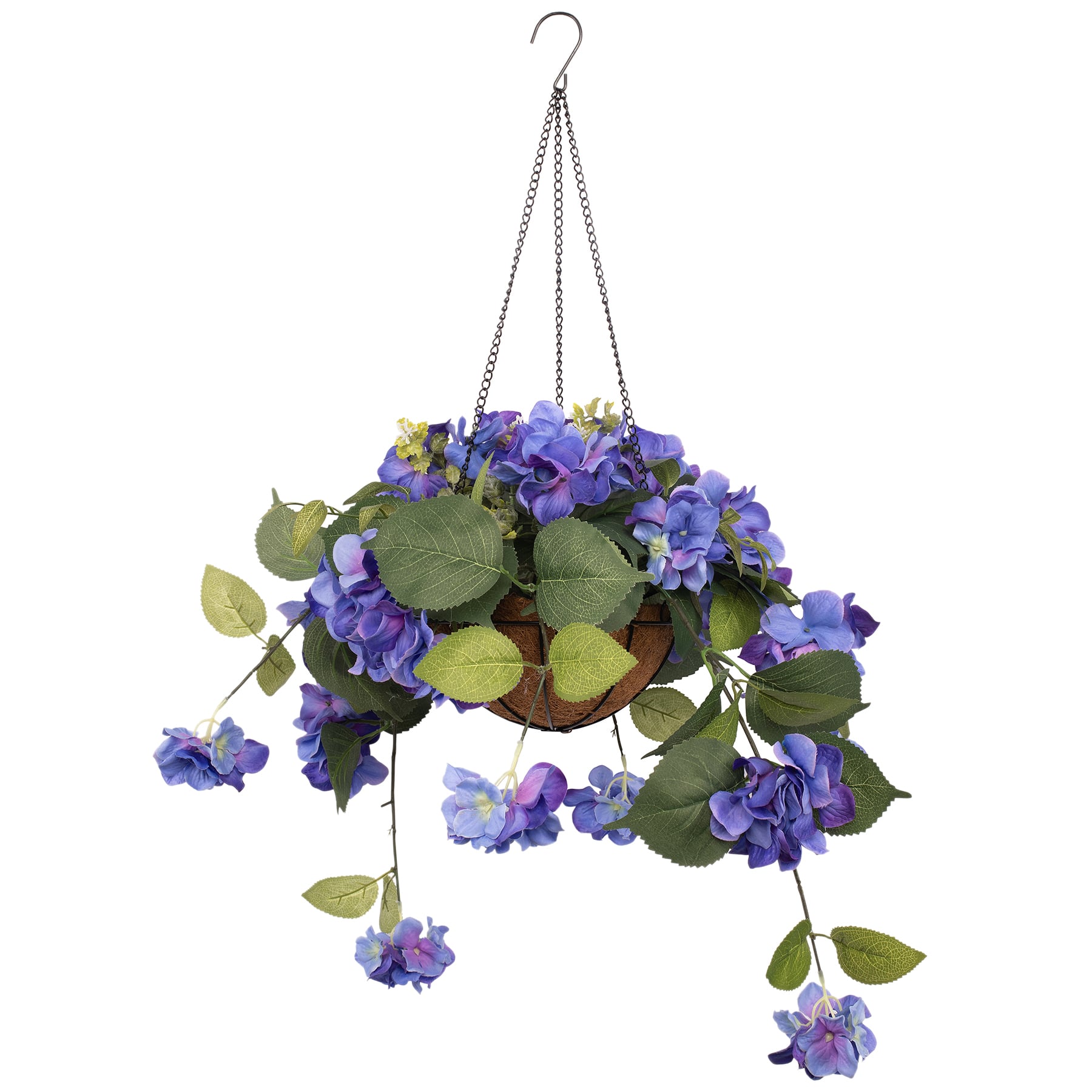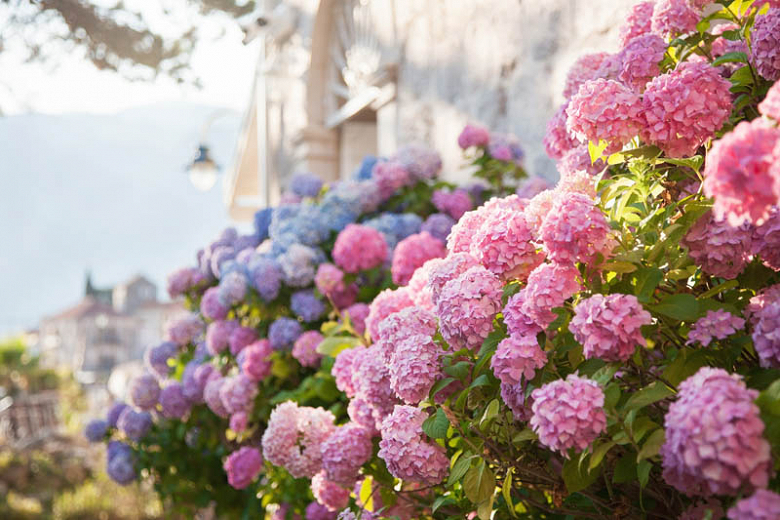The Ultimate Guide To Hanging Hydrangeas
The Ultimate Guide to Hanging Hydrangeas
Hydrangeas are some of the most popular flowering shrubs in the world, and for good reason. They come in a wide variety of colors, from white to pink to blue, and they can be grown in a variety of climates. But what if you don't have the space for a full-sized hydrangea bush? That's where hanging hydrangeas come in.
Hanging hydrangeas are a great way to add a touch of beauty and color to your home, without taking up a lot of space. They can be hung from a porch, balcony, or even a tree, and they will provide you with months of enjoyment.
In this guide, we will discuss everything you need to know about growing hanging hydrangeas, from choosing the right variety to caring for them properly. By the end of this guide, you will be well on your way to having beautiful, healthy hanging hydrangeas.
Choosing the Right Variety
When choosing a variety of hanging hydrangea, there are a few things you will need to consider. First, think about the amount of sunlight your hanging basket will receive. Most hydrangeas prefer full sun, but there are some varieties that can tolerate partial shade.
Second, consider the size of your hanging basket. Some varieties of hydrangeas can grow quite large, so you will need to make sure you have a basket that is large enough to accommodate their mature size.
Finally, think about the color of hydrangeas you would like. There are many different varieties available, so you are sure to find one that you love.
Planting Your Hanging Hydrangea
Once you have chosen your variety of hanging hydrangea, it is time to plant it. Choose a well-drained potting mix and fill your hanging basket about halfway full. Place your hydrangea in the basket and fill in around the roots with more potting mix. Water your hydrangea thoroughly and place it in a location that receives full sun or partial shade.
Caring for Your Hanging Hydrangea
Hanging hydrangeas are relatively easy to care for. Water them regularly, especially during hot weather. You may also need to fertilize them every few weeks during the growing season.
In the fall, after your hydrangeas have finished flowering, you will need to prune them back. This will help them to shape up and produce more flowers the following year.
Overwintering Your Hanging Hydrangea
If you live in a cold climate, you will need to bring your hanging hydrangea indoors for the winter. Choose a location that receives bright, indirect light. Water your hydrangea sparingly during the winter months.
Troubleshooting
If your hanging hydrangea is not doing well, there are a few things you can check. Make sure it is getting enough water. If the leaves are turning yellow, it may be getting too much sun. If the leaves are dropping, it may be getting too little water.
If you have checked all of these things and your hydrangea is still not doing well, you may need to consult with a gardening expert.
Conclusion
Hanging hydrangeas are a beautiful and easy-to-care-for addition to any home. With a little care, you can enjoy their blooms for many years to come.
If you're looking for a beautiful and unique way to add some color to your garden, consider planting a hanging hydrangea. These stunning vines produce large, cascading clusters of flowers in shades of white, pink, and blue. They're perfect for growing on a trellis, fence, or wall, and they can even be trained to climb up a tree.
Hanging hydrangeas are relatively easy to care for, but they do require some specific conditions in order to thrive. They need full sun or partial shade, and they prefer well-drained soil. They should be watered regularly, especially during the hot summer months.
If you're thinking about adding a hanging hydrangea to your garden, I encourage you to visit . This website has a wealth of information about hanging hydrangeas, including care tips, planting instructions, and varieties to choose from.
FAQ of hanging hydrangea
Q: What is a hanging hydrangea?
A hanging hydrangea is a type of hydrangea that climbs and clings to walls, fences, and other structures. It has long, trailing stems that can reach up to 30 feet in length. The flowers are typically white or pink, and they bloom in the summer.
Q: How do I plant a hanging hydrangea?
Hanging hydrangeas can be planted in the spring or fall. Choose a location that receives full sun or partial shade. The soil should be well-drained and rich in organic matter. Dig a hole that is twice the width of the root ball. Place the hydrangea in the hole and backfill with soil. Water the hydrangea thoroughly.
Q: How do I care for a hanging hydrangea?
Hanging hydrangeas need regular watering, especially during the first year after planting. Water the hydrangea deeply once a week. Mulch around the base of the hydrangea to help retain moisture. Fertilize the hydrangea in the spring with a balanced fertilizer. Prune the hydrangea in the spring to remove dead or damaged branches.
Q: What are some common problems with hanging hydrangeas?
Hanging hydrangeas are susceptible to a few common problems, including:
- Leaf spot: This fungal disease causes brown or black spots on the leaves. Treat leaf spot with a fungicide.
- Aphids: These small insects suck the sap from the leaves, causing them to wilt and curl. Treat aphids with an insecticidal soap or neem oil.
- Scale: These insects attach themselves to the stems and leaves of the hydrangea, sucking the sap. Treat scale with a horticultural oil or insecticidal soap.
Q: How do I overwinter hanging hydrangeas?
In cold climates, hanging hydrangeas may need to be protected from the cold. In the fall, mulch around the base of the hydrangea with a thick layer of organic matter. You may also need to cover the hydrangea with a burlap sack or other protective covering.
Image of hanging hydrangea
5 different images of "hanging hydrangea" from Pinterest:
- A beautiful hanging basket filled with blue hydrangeas, cascading down over the sides.

- A white hydrangea vine cascading down a fence, with a few blooms reaching up to the sky.

- A large, pink hydrangea bush hanging over a wall, its blooms spilling onto the ground below.

- A group of hanging hydrangea planters in different colors, all blooming beautifully.

- A hanging hydrangea basket with a mix of blue, pink, and white blooms, hanging in a tree.

Post a Comment for "The Ultimate Guide To Hanging Hydrangeas"